In the days before smartphones following fashion required work, a dedication to scouring the pages of glossy fashion magazines, often spending hours in magazine shops much to the chagin of owerns who would keep asking "are you going to buy that?"
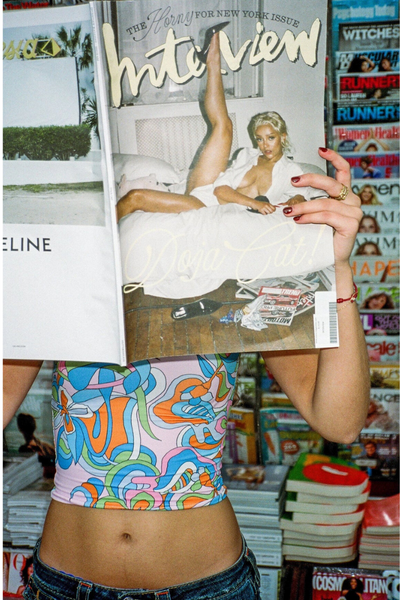
Ads in the 90s weren't what you just want to skip today, they were savoured. They felt less about selling and more about captivating.
Guess Jeans
As of the late 80s, you needed no magazine to tell you that Guess Jeans were the ultimate cool-girl badge, along with bleach-blonde perms and shiny lip gloss; worn like a second skin with the iconic red triangle intentionally on full display. The red Guess logo patch was like social gold.

Fast forward a few years and Guess Jeans effortlessly bridged the gap from the 80s, timing their landing squarely in the realm of cool for a new decade. Claudia Schiffer was the first Guess girl we knew by name. There was no internet to tell us more so all we knew is that she from Germany and we needed her on our walls. The excitement of flipping through the new issue of YM magazine and discovering a fresh Claudia ad, was better than Pokemon.
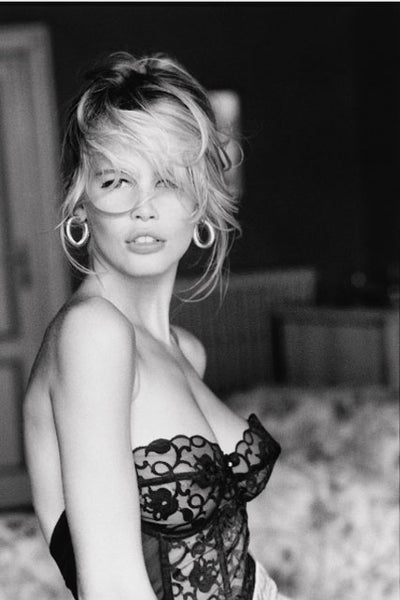
Claudia Schiffer set a high bar and made the entrance of Anna Nicole Smith even more alluring. Her rise felt instant and she captured the media's attention. From single Texas mom to supermodel, seemingly overnight.
Before notions of "plus size" entered the mainstream lexicon she defied categorization. She embodied total glamour—platinum blonde curls, smoky cat eyes, bold red lips, and a presence that was both daringly sexy and elegantly poised.
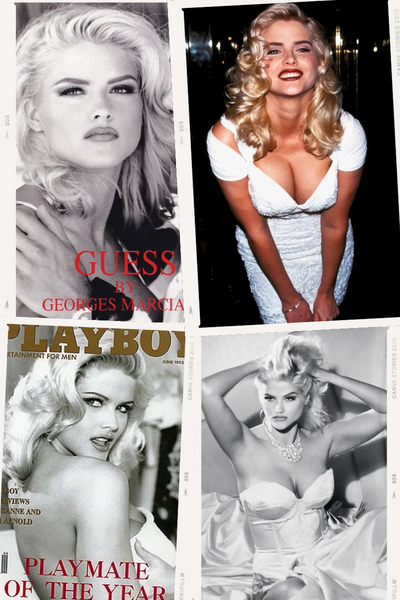
Her allure was magnified by a sense of vulnerability, adding a layer of mystique that captivated audiences. The tale of Anna Nicole is complex and didn't have a fairy-tale ending but she left her mark on fashion and will forever be remembered as an iconic superstar.
Calvin Klein
In sharp contrast to the Guess smolder was a new kind of 90s sexy.
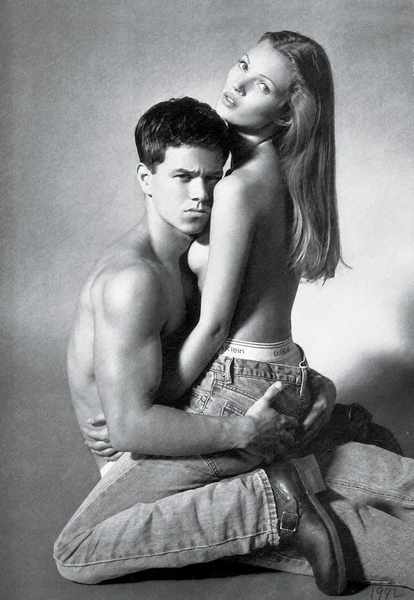
Before Mark Whalberg the actor, came Marky Mark of Marky Mark and the Funky Bunch fame. Good Vibrations was his biggest and could be heard blasting at high school dances coast to coast.
If Marky Mark wasn't your thing, Kate Moss certainly was and became a defining icon of the 90s. Kate was cool and she just didn't care. It's interesting to look back and learn that this experience working with Marky Mark was so distressing that it sent her into a depression of sorts. She revealed in an interview with Vanity Fair that experience working with him left her not wanting to leave her bed for two weeks, fearing for her life.
“I had a nervous breakdown when I was 17 or 18, when I had to go and work with Marky Mark and Herb Ritts, it didn’t feel like me at all. I felt really bad about straddling this buff guy. I didn’t like it. I couldn’t get out of bed for two weeks. I thought I was going to die."
Wahlberg, her co-star in the shoot, didn't help matters with his less than flattering remarks to the press, comparing her to a "very pretty nephew." In today's social media-driven world, such a fallout might have been smoothed over publicly with a reconciliatory tweet, the brand leveraging the buzz. Yet, those moments remain a stark reminder of the era's complexities and the personal challenges faced by those in the spotlight.

But even if I'd known back then that they had zero chemistry it wouldn't have mattered because for me this picture had nothing to do with him and everything to do with Kate. I and many others were in love with everything about her.
Donna Karan
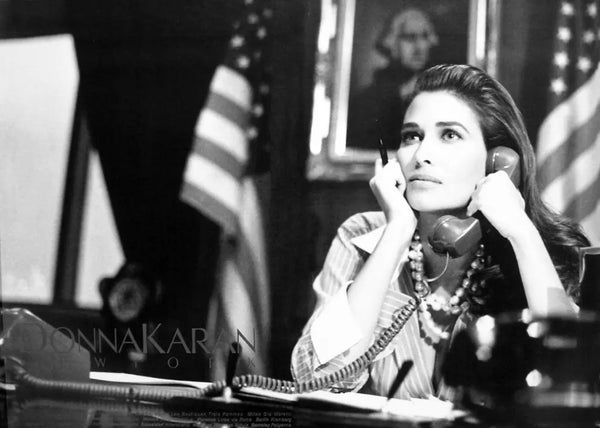
Donna Karan ads felt a bit too 'business' for our then-youthful tastes but there was always that underlying thought, "Someday, you'll wear Donna Karan!"
But until then, we were happy to settle for a DKNY bodysuit like these ones worn by Niki and Krissy Taylor.
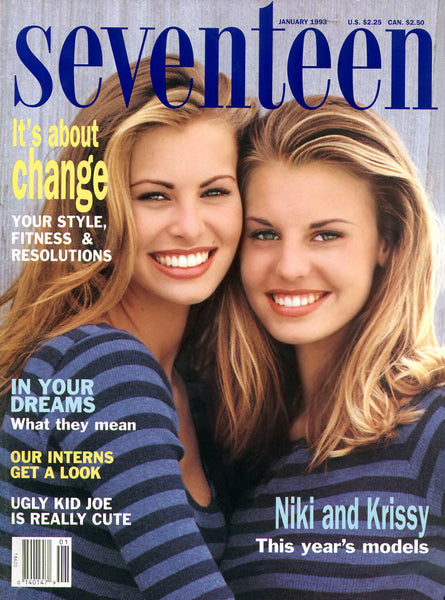
But even as teenagers, the Donna Karan brand was power and presence. In 1992, she launched an editorial-style campaign that was groundbreaking for its time, portraying a woman on the presidential campaign trail. Spanning several pages in black and white, the campaign said simply, "In Women We Trust."

Karan explained to New York magazine that her "In Women We Trust" campaign wasn't meant as a feminist slogan but as a reflection on the troubled state of U.S. politics, emphasizing the role of women as nurturers during challenging times. Some things endure it seems. She aimed for the campaign to be timeless, transcending specific moments, based on the belief that women prefer fashion that transcends seasonal trends.
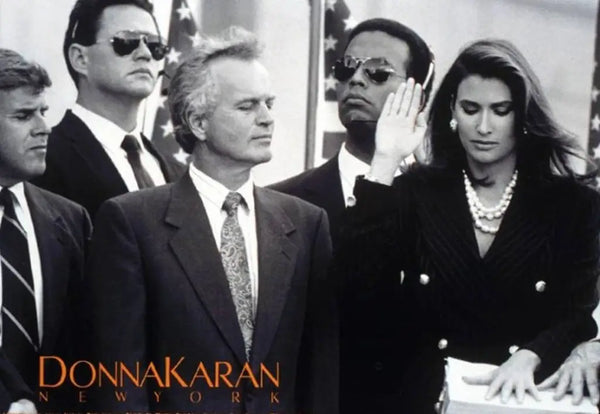
Just last week Donna Karan announced an "iconic revival" of the campaign moniker for it's Spring 2024 campaign calling it,
...a resounding celebration of the brand's iconic heritage that now marks a new chapter in both legacy and future."
Photographed by Annie Leibowitz, the campaign features 8 icons, including Cindy Crawford and Linda Evangelista who will all come together for the first time to share inspiring tributes of Donna Karan's influence. You can see them on YouTube.

Tommy Hilfiger
The 90s ushered in a cultural shift where fashion began to intertwine with music, particularly hip hop, and Tommy Hilfiger as at the forefront. This era saw the brand become a staple in the music scene, blurring lines between style and sound in a way that had never been done before.
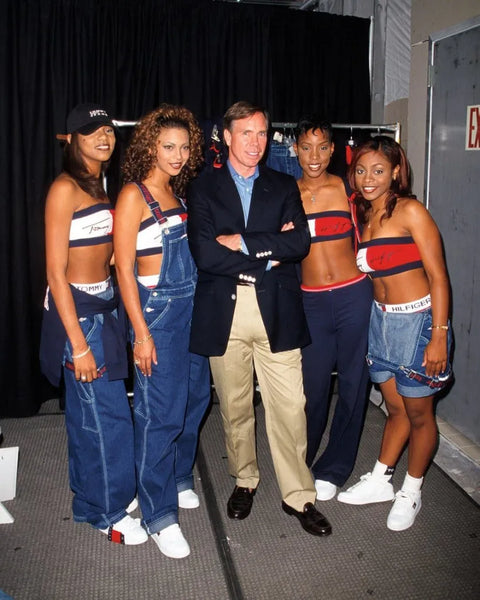
It's somewhat ironic that Tommy Hilfiger, a brand that epitomized the quintessential preppy America look, became a cornerstone in hip hop fashion during the 90s. This juxtaposition highlighted the brand's unexpected crossover appeal and its ability to resonate across diverse cultural landscapes.
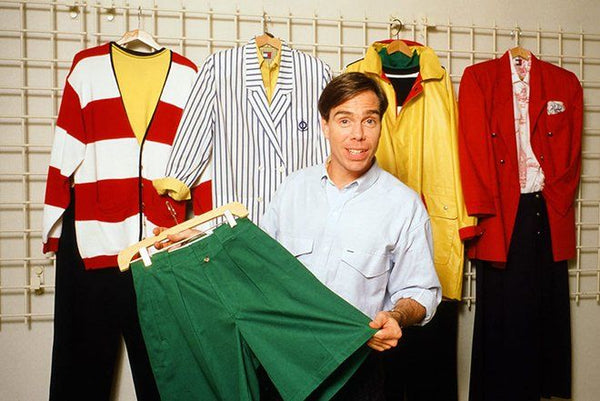
In today's landscape, link between fashion and music seems obvious but this wasn't the case back then.
The exact moment that kicked off this fusion is hard to pin point but a defining moment for Tommy Hilfiger could be traced back to Mary J. Blige's "What’s the 411?", that featured a verse from Grand Puba that name-dropped Tommy Hilfiger
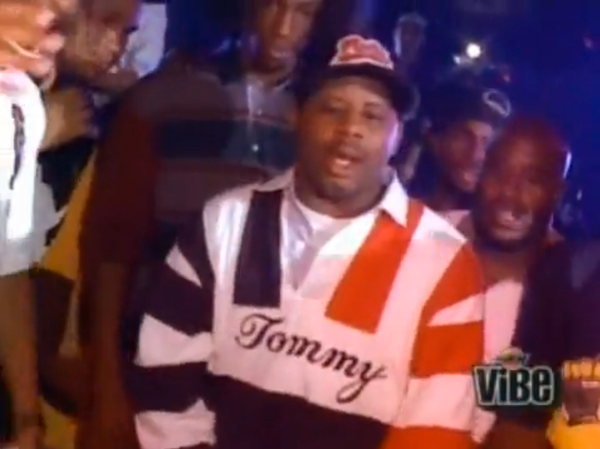
This shout-out was a testament to the growing influence of hip hop on fashion. Grand Puba says he mentioned Tommy Hilfiger simply because it was what was "fresh" at the time, pointing to an organic merger of these two worlds.
The Tommy trend was solidified in 1994 when Snoop Dogg appeared on SNL sporting a Tommy Hilfiger rugby shirt. This moment was pivotal, introducing 'street style' to the mainstream and sparking yet another trend of the brand logo.
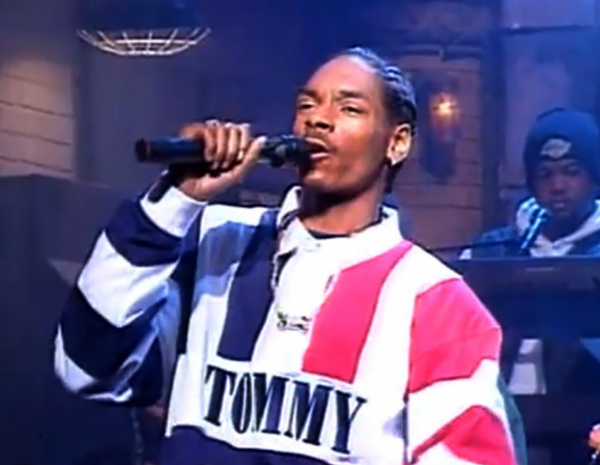
Aaliyah became one of the iconic faces of Tommy Hilfiger in the mid-1990s. Aaliyah's cool, understated style meshed perfectly with Tommy Hilfiger's brand, which was aiming to solidify its standing with youth. Her appearances in oversized Tommy Hilfiger logo tees, baggy jeans, and the iconic red, white, and blue color scheme became definitive looks of the 90s. Her style was her own and she remains legendary.
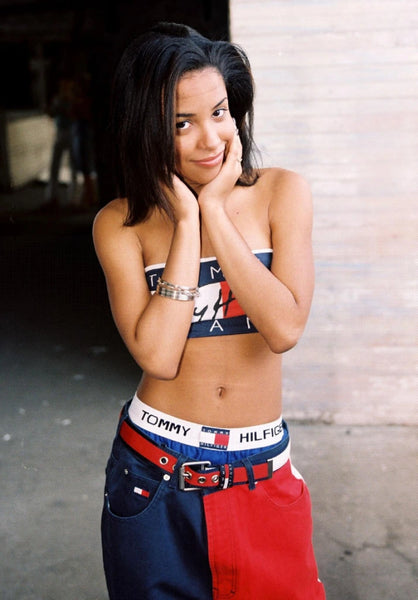
Even after Aaliyah's tragic death in 2001, the impact of her partnership with Tommy Hilfiger remains a celebrated chapter in the history of 90s fashion. It serves as a testament to her lasting influence on the fashion industry and her role in shaping the aesthetic of an era.

Miu Miu
The changing relationship between fashion and music was also taking place between fashion and hollywood. Fashion's golden rule used to be that models model, actors act.
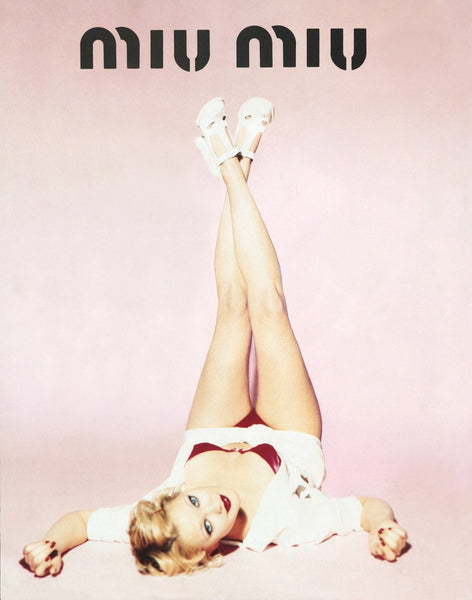
Seemingly worlds apart, each stuck to their own script—until Drew Barrymore changed all that in a 1994 Miu Miu campaign.
If you grew up in the 90s, Drew wasn't just any actor; she was the little girl in E.T. and the coolest person you'd even know.
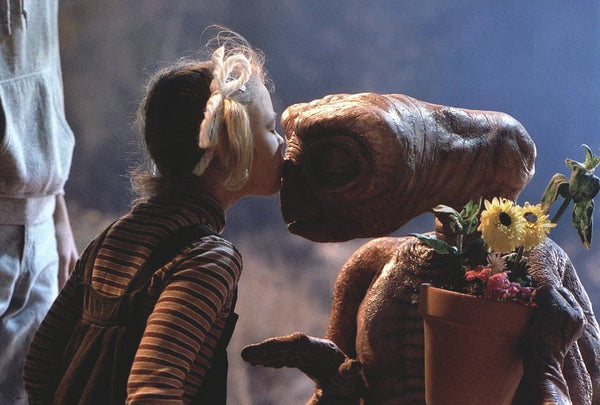
The 90s were a shift towards a more eclectic and individualistic approach to style. Drew Barrymore, with her unique blend of rebellious charm and Hollywood pedigree, embodied a fresh, edgier image that contrasted sharply with the more polished and refined looks that had dominated previous years.
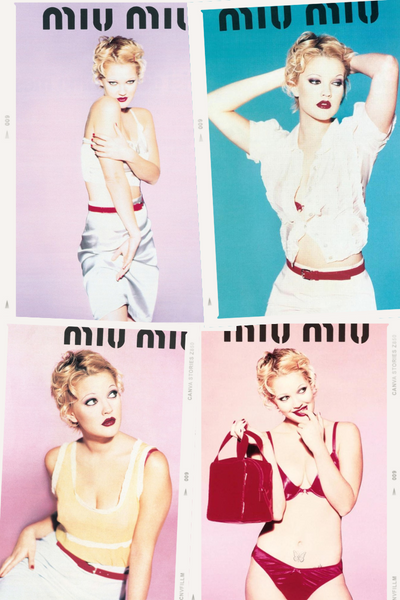
This Miu Miu campaign, shot by Ellen von Unwerth, was a pivotal shift in marketing that emphasized personal style and authenticity and started the change of how brands communicate and connect with their audiences.
Gianni Versace
Versace ads were the ultimate page-turners. They were like stepping into a world where bold prints and colors collided in the most spectacular fashion—pure magic on paper. Versace ads were cultural statements that echoed the era's evolving attitudes toward fashion, celebrity, and luxury.
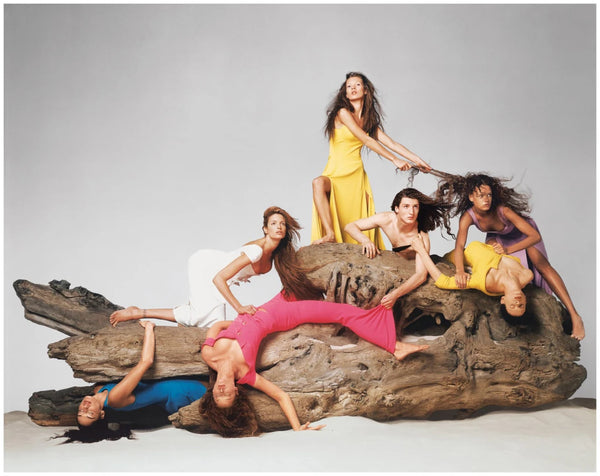
Versace was among the first designers to leverage the power of celebrity in fashion advertising.
He featured top-tier celebrities like Madonna and supermodels like Naomi Campbell, and Cindy Crawford making them a part of the brand's identity versus just faces in a campaign.
The aesthetic of Versace ads were unmistakable—rich, vivid colors, intricate patterns, and a blend of classical and contemporary motifs.
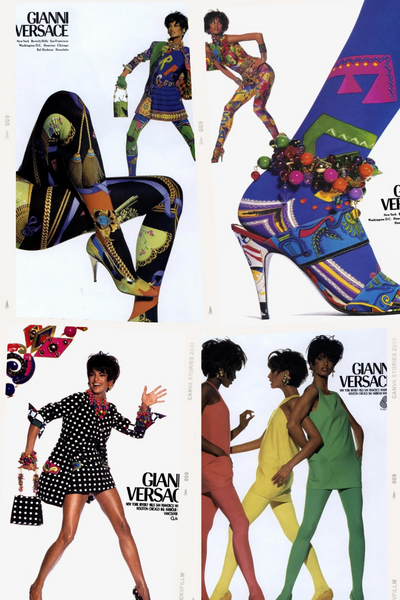
Versace wasn't just a brand; it was a career launcher for a lucky few. Who would have thought that one dress could could be all it took? Pinning down one standout year is a challenge because the entire decade of high fashion seemed to be dominated by Versace.

Versace ads were a microcosm of his broader impact on '90s fashion—ushering in an era of unabashed glamour, sexuality, and celebrity influence that would be a defining part of the decade's aesthetic.
Gucci
Tom Ford's arrival at Gucci in the mid-1990s marked a transformative period for both the brand. When Ford took over as creative director in 1994, Gucci was struggling financially and had lost much of its former allure. Ford's vision, creativity, and strategic approach revitalized Gucci, turning it into a symbol of luxury, sex appeal, and modern sophistication.
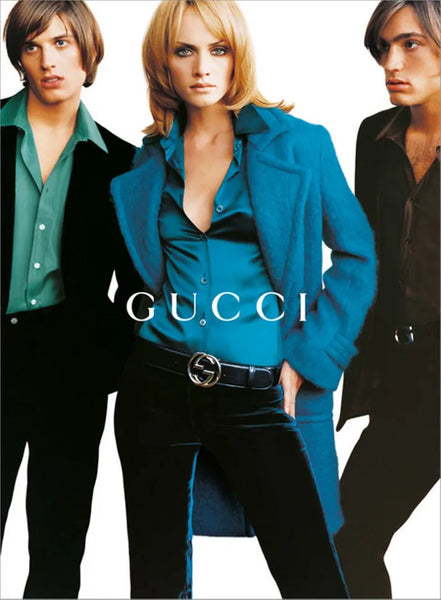
His infamous 1995 velvet hip-huggers, satin shirts, become iconic pieces.
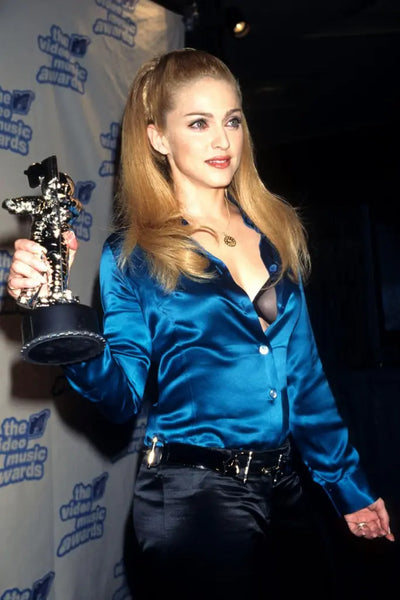
Ford transformed Gucci fashion shows into highly anticipated, glamorous events that captured the industry's and public's imagination. His runway presentations were theatrical and impactful, often setting the tone for fashion trends worldwide. This approach elevated the brand's profile and set a new standard for how fashion shows could be used as a powerful marketing tool.
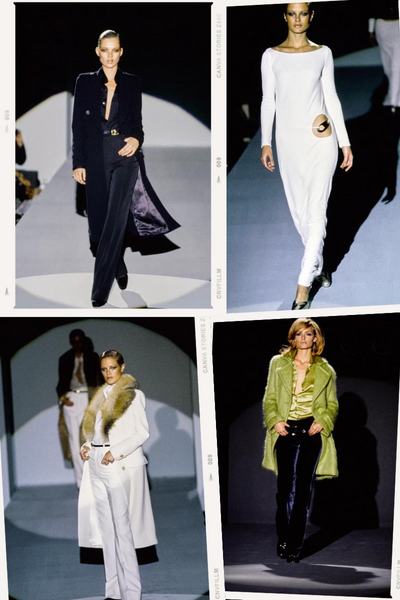
Today's digital era, with its relentless quest for likes and reposts, might not fully embrace the boldness of 90s Gucci, but back then, under Tom Ford's direction, Gucci epitomized new-wave glamour and oozed undeniable sex appeal. Ford's tenure was marked by a provocative edge that was groundbreaking.
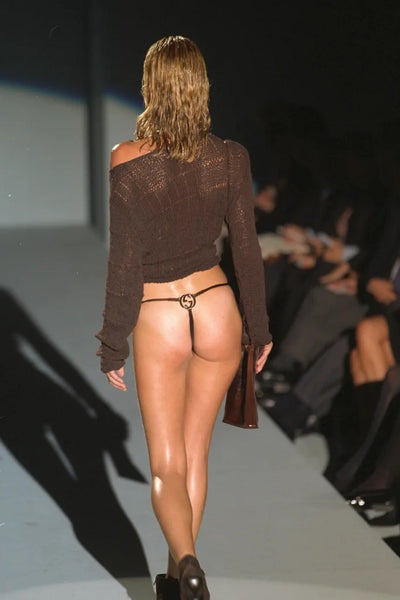
Fern Mallis, the visionary behind New York Fashion Week, famously noted,
“He understood more than anyone else that sex sells.”
In hindsight, these groundbreaking campaigns might not strike today's audience as particularly daring. However, in their time, Tom Ford's ads for Gucci were seen as almost revolutionary, skirting the edge of what was publicly acceptable.
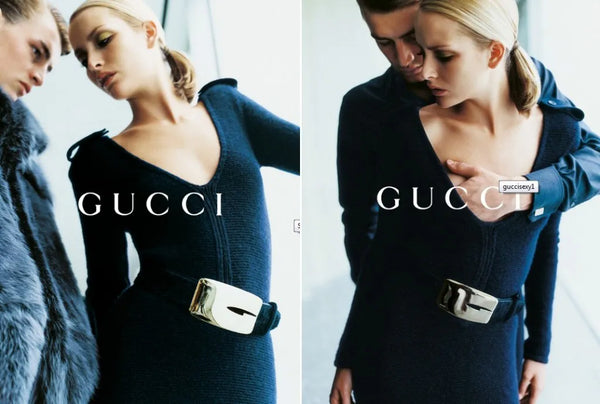
They played with themes of voyeurism and seduction in a manner that was both bold and new, especially in a pre-mobile video era.
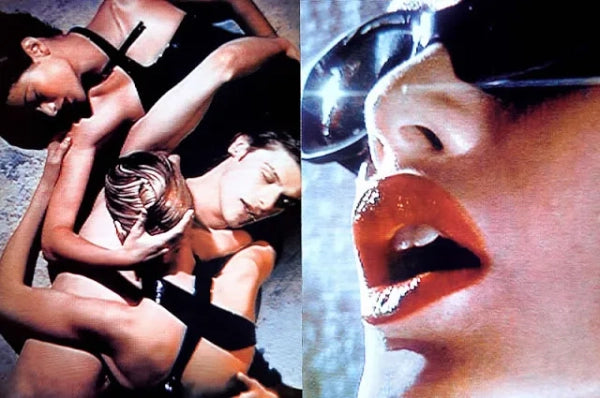
Tom Ford's influence on Gucci and the fashion industry at large was profound. He not only saved Gucci from financial ruin but also redefined what luxury fashion could be in the modern era, blending traditional elegance with contemporary appeal. His legacy at Gucci set the stage for the brand's ongoing success and left an indelible mark on the fashion industry.
The 90s fashion scene was a wild mixtape of bold trends and game-changing moments. This era taught us that fashion isn't just about the clothes we wear; it's about the stories they tell and the fantasies they sell.
That's the era that brought fashion icons off the glossy pages and onto our bedroom walls, turning every ad into a manifesto of cool. And as we look back, we can't help but say, "As if!" to anyone who doubted the lasting impact of this rad decade on today's fashion scene. Peace out, 90s—you were all that and a bag of chips.
